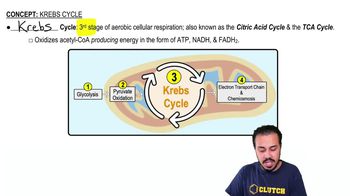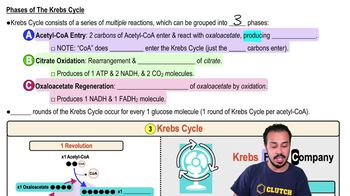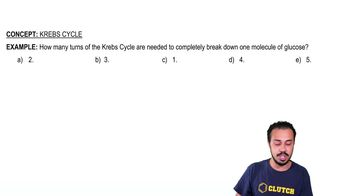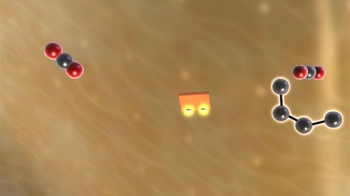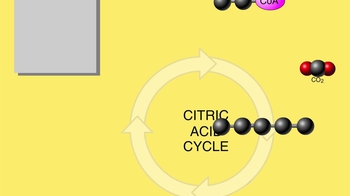3. Energy & Cell Processes
Krebs Cycle
3. Energy & Cell Processes
Krebs Cycle
Additional 2 creators.
Learn with other creators
Showing 5 of 5 videos
Practice this topic
- Multiple Choice
Which product of the Krebs cycle is also used as a reactant in the Krebs cycle?
a) Citrate.
b) ATP.
c) Acetyl-CoA.
d) Oxaloacetate.
- Multiple Choice
Taking one molecule of glucose through glycolysis, pyruvate oxidation, and the Krebs cycle generates:
a) 6 CO2, 8 NADH, 2 FADH2 and 4 ATP.
b) 6 CO2, 8 NADH, 1 FADH2 and 2 ATP.
c) 6 CO2, 10 NADH, 2 FADH2 and 4 ATP.
d) 6 CO2, 10 NADH, 2 FADH2 and 2 ATP.
- Multiple ChoiceWhy is the citric acid cycle called a "cycle"?
- Multiple ChoiceWhich of the following processes generates most of the NADH that delivers electrons to the electron transport chain?
- Open QuestionWhere does the citric acid cycle occur in eukaryotes?a. in the cytosol of cellsb. in the intermembrane space of mitochondriac. in the inner membrane of mitochondriad. in the matrix of mitochondria
- Open QuestionWhere does the citric acid cycle occur in eukaryotes?a. in the cytosol of cellsb. in the intermembrane space of mitochondriac. in the inner membrane of mitochondriad. in the matrix of mitochondria
- Open QuestionIn step 3 of the citric acid cycle, the enzyme isocitrate dehydrogenase is regulated by NADH. Compare and contrast the regulation of this enzyme with the regulation of phosphofructokinase in glycolysis.
- Open QuestionIn the citric acid cycle, an enzyme oxidizes malate to oxaloacetate, with the production of NADH and the release of H+. You are studying this reaction using a suspension of bean cell mitochondria and a blue dye that loses its color as it takes up H+. You set up reaction mixtures with mitochondria, dye, and three different concentrations of malate (0.1 mg/L, 0.2 mg/L, and 0.3 mg/L). Which of the following graphs represents the results you would expect, and why?
